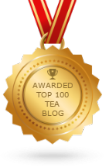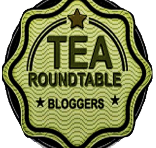Organic Still Going Strong

Organic product sales grew by 5.3% overall in 2009 to $26.6 billion. $24.8 billion of that was organic food. Total food sales grew by only 1.6% in 2009 so the organic category showed a healthy growth and trend. According to the
Organic Trade Association's 2010 Organic Industry Survey, consumers made other cuts before they gave up products they valued. Organic fruits and vegetables experienced the most robust growth and now represent 11.4% of all U.S. fruit and vegetable sales. Surprisingly, the mass market distribution channels had the largest share of food sales in 2009 indicating that organic produce is now carried and bought in mainstream grocery stores. By the way, look for the USDA Organic logo. It is your only assurance that it is certified organic. Do not be fooled by the words "natural", "low in pesticides" or "earth-friendly".
According to
foodnews.org, the list of the
Dirty Dozen - foods you should buy Organic - are as follows:
- Celery
- Peaches
- Strawberries
- Apples
- Blueberries
- Nectarines
- Bell Peppers
- Spinach
- Kale
- Cherries
- Potatoes
- Grapes (imported)
The list of foods lowest in pesticides, the
Clean 15, are:
- Onions
- Avocado
- Sweet Corn
- Pineapple
- Mango
- Sweet Peas
- Asparagus
- Kiwi
- Cabbage
- Eggplant
- Cantaloupe
- Watermelon
- Grapefruit
- Sweet Potato
- Honeydew Melon
 Organic product sales grew by 5.3% overall in 2009 to $26.6 billion. $24.8 billion of that was organic food. Total food sales grew by only 1.6% in 2009 so the organic category showed a healthy growth and trend. According to the Organic Trade Association's 2010 Organic Industry Survey, consumers made other cuts before they gave up products they valued. Organic fruits and vegetables experienced the most robust growth and now represent 11.4% of all U.S. fruit and vegetable sales. Surprisingly, the mass market distribution channels had the largest share of food sales in 2009 indicating that organic produce is now carried and bought in mainstream grocery stores. By the way, look for the USDA Organic logo. It is your only assurance that it is certified organic. Do not be fooled by the words "natural", "low in pesticides" or "earth-friendly".
According to foodnews.org, the list of the Dirty Dozen - foods you should buy Organic - are as follows:
Organic product sales grew by 5.3% overall in 2009 to $26.6 billion. $24.8 billion of that was organic food. Total food sales grew by only 1.6% in 2009 so the organic category showed a healthy growth and trend. According to the Organic Trade Association's 2010 Organic Industry Survey, consumers made other cuts before they gave up products they valued. Organic fruits and vegetables experienced the most robust growth and now represent 11.4% of all U.S. fruit and vegetable sales. Surprisingly, the mass market distribution channels had the largest share of food sales in 2009 indicating that organic produce is now carried and bought in mainstream grocery stores. By the way, look for the USDA Organic logo. It is your only assurance that it is certified organic. Do not be fooled by the words "natural", "low in pesticides" or "earth-friendly".
According to foodnews.org, the list of the Dirty Dozen - foods you should buy Organic - are as follows:


